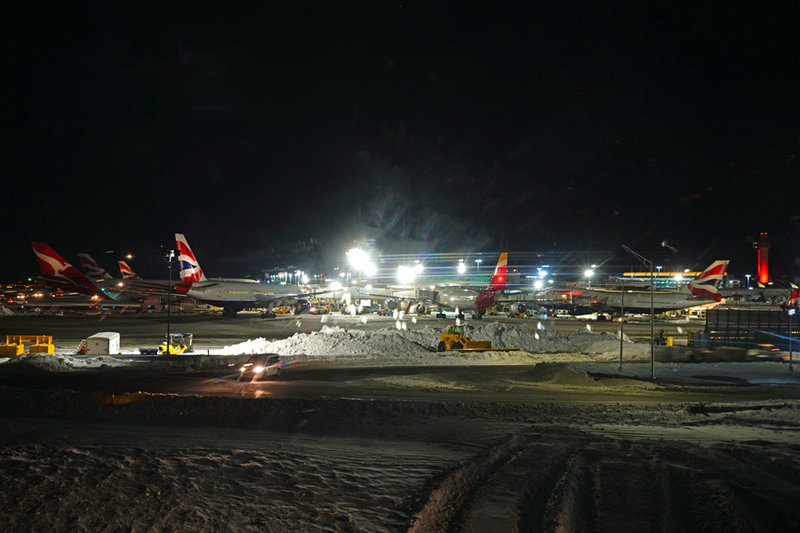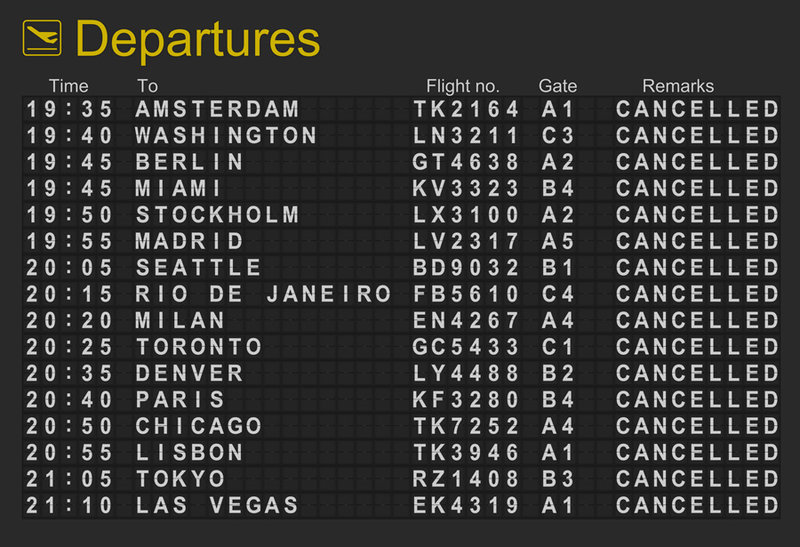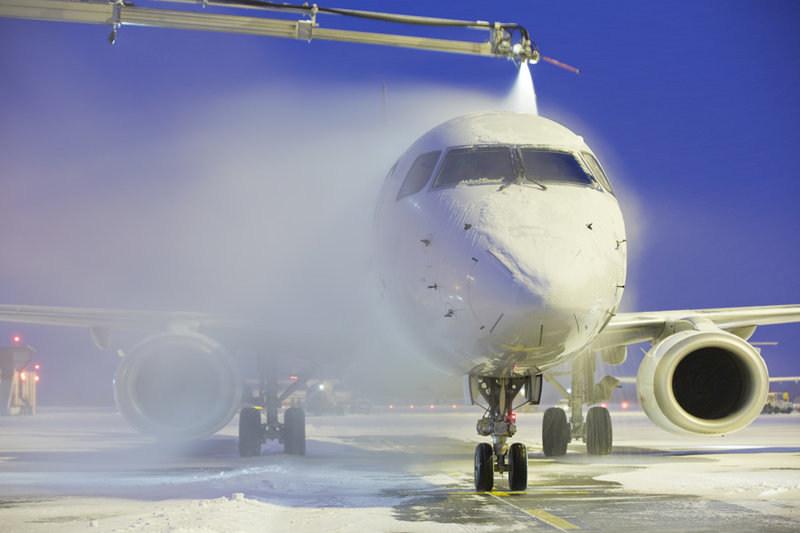Winter Operations
Winter chaos: will JFK’s new storm plan be enough to prevent future failures?
The
future
of US air
traffic control:
the third option?
Earlier this year, Port Authority officials unveiled the new winter storm plan for John F. Kennedy International Airport, after poor preparation in the face of a strong storm plunged the airport into a meltdown.
Eva Grey explores the report’s recommendations
J
ohn F. Kennedy International Airport (JFK) had a rough start to 2018. In January, the airport was hit by storm Grayson, a powerful ‘bomb-cyclone’ that ravaged its way across the US East Coast.
The storm, which delivered hurricane-force winds, heavy snowfall and icy temperatures, plunged the busiest airport in the New York City metropolitan area into a three-day crisis, bringing operations to a standstill. In fact, the issues were so serious that New York’s Governor Andrew Cuomo declared a state of emergency as soon as the winter storm shut down the airport.
But even before the storm, JFK hasn’t had it easy. The airport has been consistently criticised for its deficient terminal infrastructure– some buildings were constructed as long ago as 1962– which in turn leads to a general lack of coordination and communication.
During Grayson, operations at JFK were “severely and disproportionately impacted by the storm as compared to other airports in the Northeast Corridor”, a four-month long investigation led by former US Department of Transportation Secretary Ray LaHood concluded.
The comprehensive report that resulted from the investigation was published in May. LaHood was tasked by the Port Authority to get to the bottom of why JFK struggled to face the storm and also to ensure it would never happen again.
After nearly 100 separate interviews with over 150 key airport stakeholders, the report came up with 50 recommendations as to how JFK should better prepare for emergency situations.
“One thing was made clear,” LaHood wrote in the report’s introduction. “All had a desire to change JFK for the better. It is my strong belief that JFK can and will do better. What it needs are the critical tools to help each of the stakeholders perform seamlessly under even treacherous conditions.”
Image courtesy of
How did JFK’s troubles start?
The airport knew the storm was incoming. JFK personnel had been continuously monitoring weather reports and forecasts in the days and hours before it hit.
In response to these forecasts, between 3 and 4 January, JFK carriers cancelled approximately 200 flights, representing a 25% reduction of a normal January day’s roughly 1,200-operation schedule. But, the report found, this number was markedly lower than advanced flight cancellations at both Newark Liberty International Airport and LaGuardia.
The snowfall impacted virtually all of the airport’s operations, from ground handling and aircraft flow rate, to baggage displacement and repatriation, and brought runways to a standstill. During the storm, thousands of bags were stranded at the airport for days. In addition, JFK, unlike other Northeast Corridor airports, struggled with its recovery efforts.
What’s more, on 7 January, when everyone thought the worst was over, a pipe burst in the Terminal 4 arrivals hall, causing water to flood down from the ceiling. The entire terminal had to be shut down and passengers were evacuated. The pouring water caused a power outage, damaged stranded luggage and to top it all off, water spread outside, where it froze and covered the terminal’s arrivals roadway in ice. As the report put it, the pipe burst was a proverbial kick to JFK while it was already down.

Image: EQRoy / Shutterstock.com
In their investigation, the team found “deficiencies in communication at critical points during Grayson and the following days that no doubt exacerbated already difficult conditions.”
However, the report made it clear that JFK’s misfortunes cannot be attributed to a lack of effort from staff.
“We found that when faced with the difficult conditions of Grayson, JFK management and other stakeholders pitched in to help each other,” the report said. “Some worked 24 hours a day for days. People literally rolled up their sleeves and unloaded bags, carried passengers off planes, moved cots, and mopped up water – they did whatever they could to help – whether or not it was their job. Their effort did not end when the storm did.”
Eero Knuutila is Head of Service Development at Helsinki Airport.
Image courtesy: Helsinki Airport
Between 3 and 4 January, JFK carriers cancelled approximately 200 flights, representing a 25% reduction
A new top-down approach
The in-depth recommendations made in the report are overwhelmingly focused on improved communication among stakeholders, both during normal operations and in crisis situations.
First and foremost, the report singled out a lack of a command and control centre at JFK as a critical oversight.
“A command centre – with capable leadership at the top, a clear chain of command, and effective standard operating procedures – is the critical foundation upon which most of our other recommendations are built,” the report concluded. “With that structure in place, almost all of the breakdowns experienced during Grayson would have been mitigated or eliminated.”

Image courtesy of
What serves this role in times of crisis is currently the Emergency Operations Center (EOC), which is a work in progress, but also “an effective vehicle”, as LaHood described it. However, while the current EOC focuses on “storm emergencies”, the report points out that going forward, the airport should be prepared to handle threats other than winter storms, such as other severe weather events, natural disasters, terrorist attacks and individual acts of violence.
“JFK needs to implement clear policies and procedures that empower the airport community to work collaboratively through the EOC to manage and recover from airport disruptions of all types,” it advises.
Moreover, all stakeholders, including the Federal Aviation Administration, landside and airside snow removal companies, the International Air Transport Association and others should be invited to join critical discussions and planning meetings.
First and foremost, the report singled out a lack of a command and control centre at JFK as a critical oversight
A holistic approach for a stronger airport
When it comes to traffic management, JFK should adopt policies to incentivise airlines to act upon its recommendations, but also to encourage airlines to self-police one another. At times of distress, chief pilots should be given ‘ride-alongs’ with airport personnel to assess the airfield conditions first-hand and then share their evaluations of the runway and taxiway conditions with all JFK airlines, to assist them in making cancellation decisions.
The report suggested further infrastructure investment too, such as the building of a remote offloading gate area at JFK that would act as a ‘pop-up’ terminal for flights that miss their arrival window. Los Angeles International Airport currently has one, which at present acts as a deplaning area for passengers, who are then bused over to the terminals. In fact, leveraging the knowledge and capabilities of other airports with expertise in critical areas is another key recommendation in the report. In the meantime, JFK could utilise the vacant radiant de-icing tent and Hangar 19 as alternative areas for passenger offloading during weather emergencies.

Image courtesy of
Arguably one of the biggest issues that JFK, or any other airport, faces during tough times is handling passenger complaints and pacifying disgruntled customers.
The report addressed this aspect as well, and recommended a number of solutions, including: communicating schedule changes to passengers as early as possible during predicted weather events; waiving rebooking fees if customers change flights within 48 hours; delaying baggage check-in times in accordance; and simplifying the baggage claims system.
“The recommendations in this report can assist JFK perform better for the flying public not just during weather events,” LaHood concluded. “They will help JFK operate more efficiently on a day to day basis, which is good for everyone who travels here. With a strong leadership structure, effective communication, and coordination among various stakeholders, the unique structure of JFK – including its independently operated terminals – can be a strength, rather than a weakness.”
Eero Knuutila is Head of Service Development at Helsinki Airport.
Image courtesy: Helsinki Airport
One of the biggest issues that JFK faces during tough times is handling passenger complaints